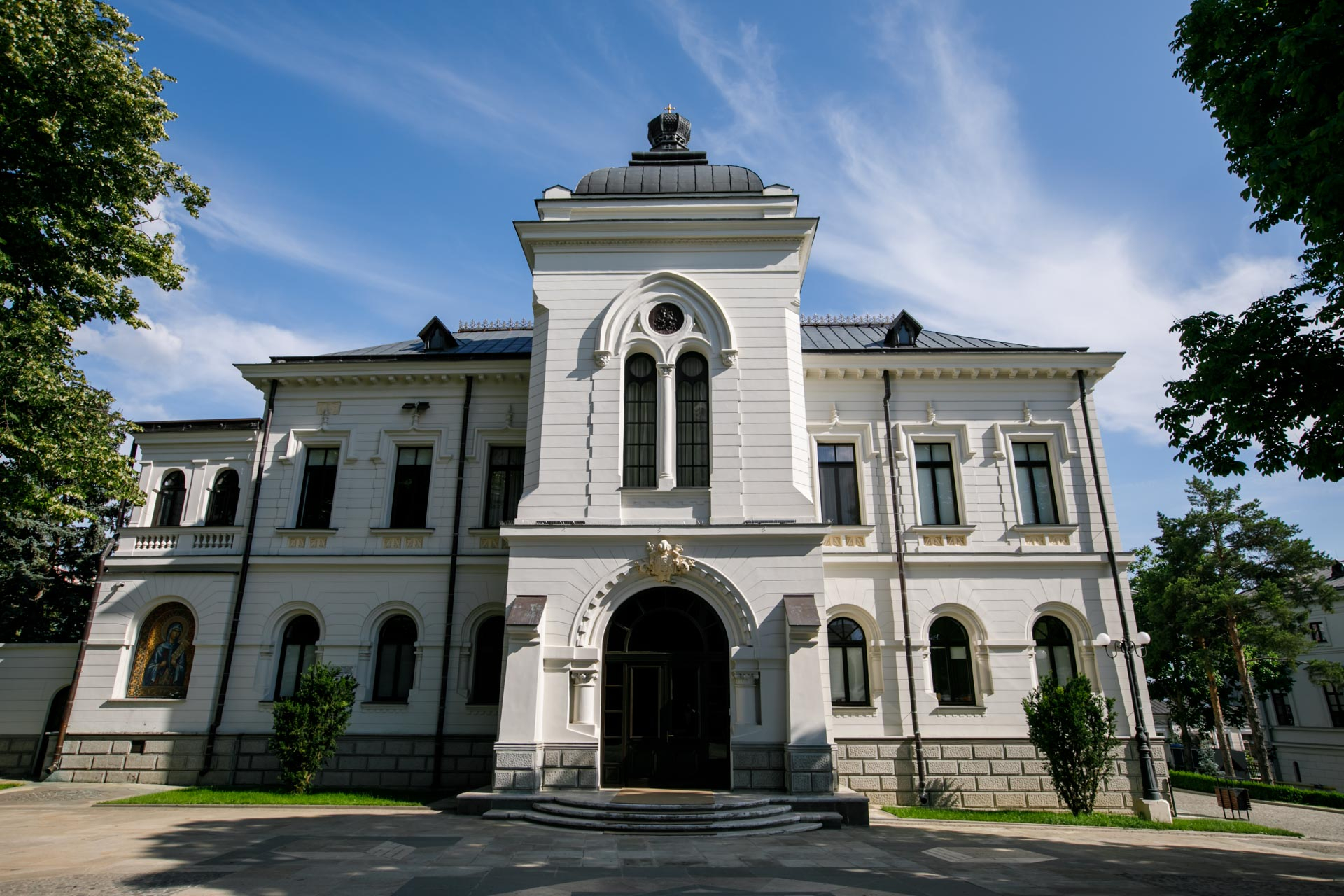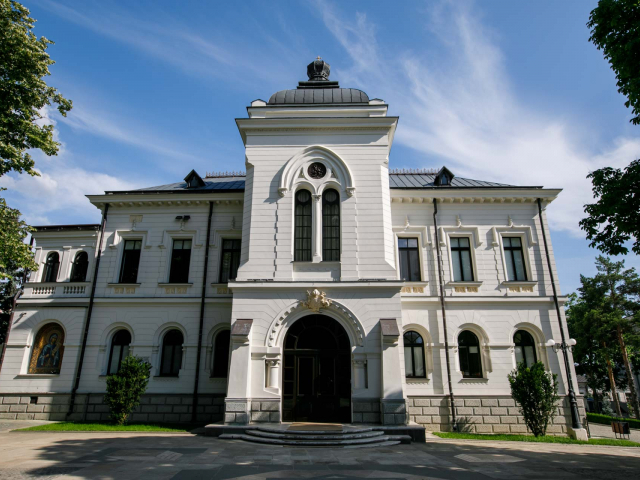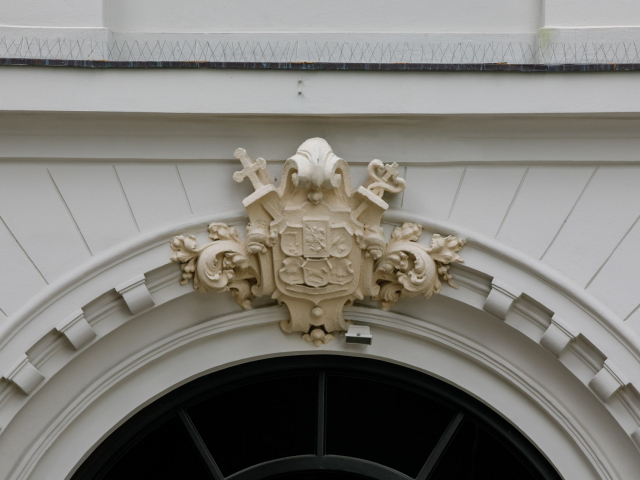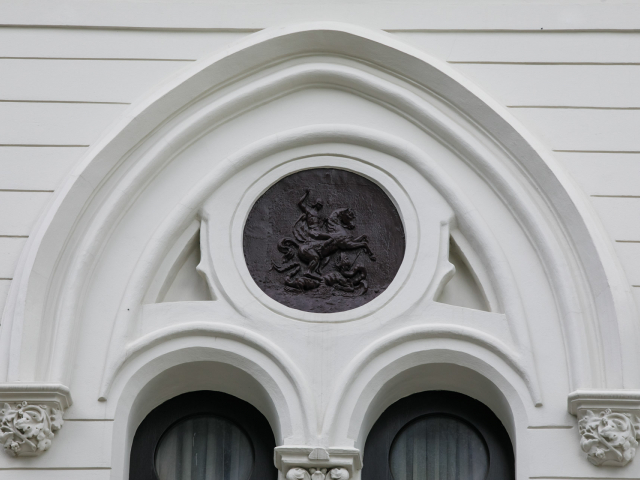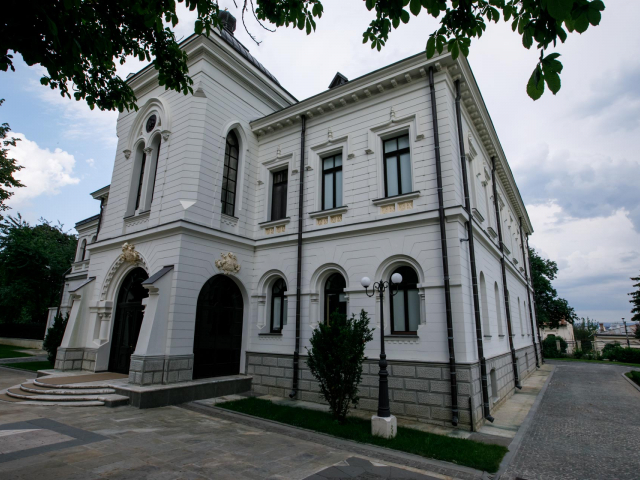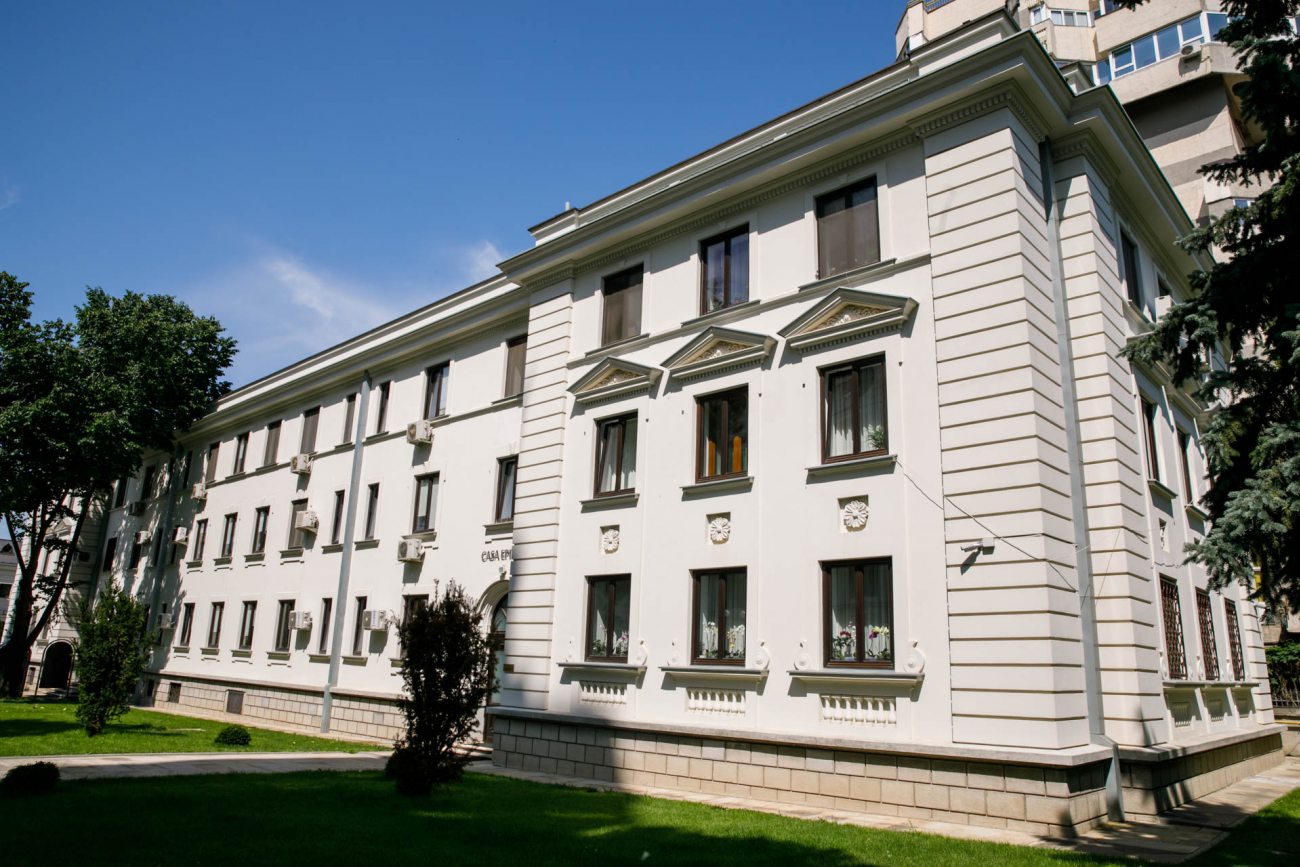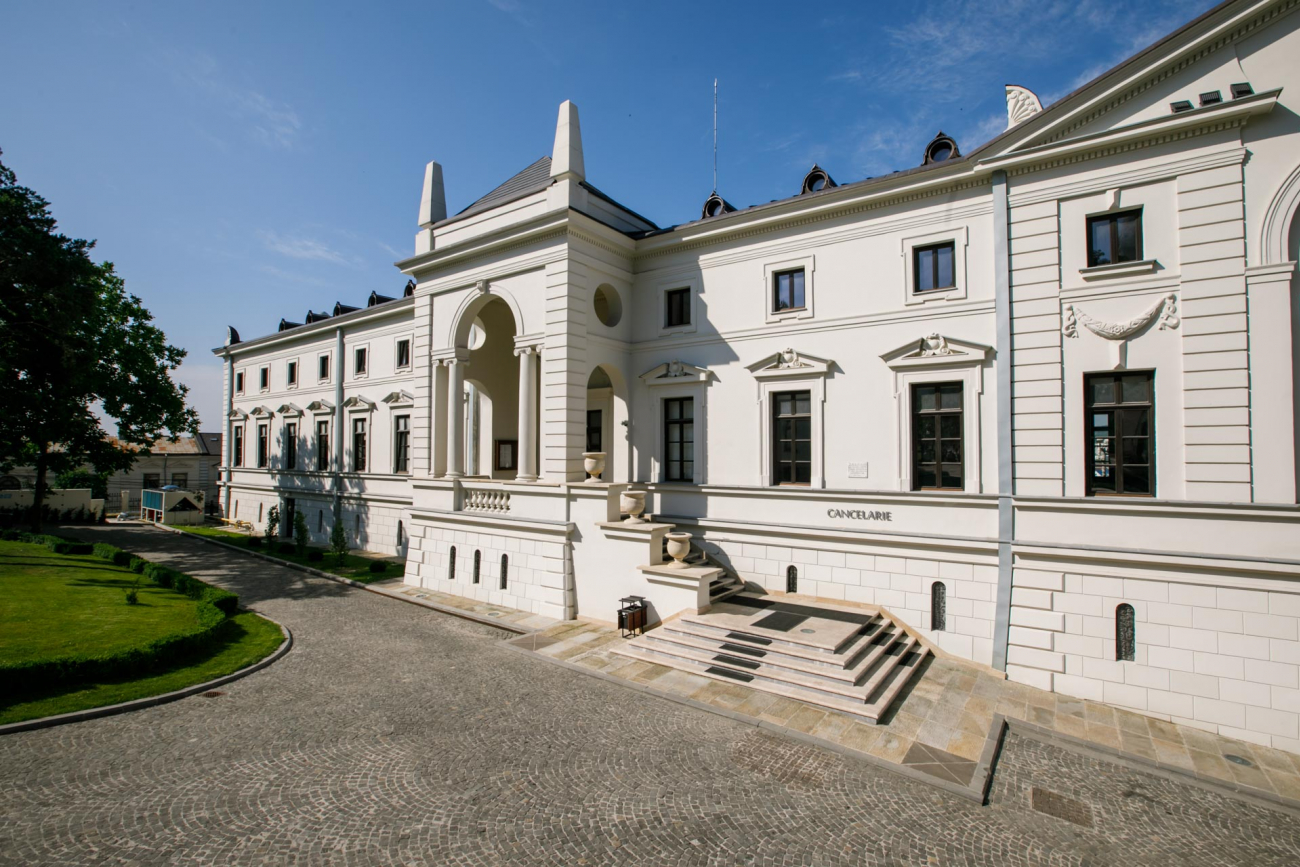The Metropolitan Palace
After the main residence of the princes of Moldavia was changed from Suceava to Iași (1654), the metropolitan bishop had a house near the White Church where he was living while visiting the new capital. This was not his only residence in town, for often the prelate used to stay for longer periods of time at one of its thriving monasteries (Cetățuia, “Princely St Nicholas” or Golia). After the “new Metropolitan Cathedral”, Stratenia Church was built, Princess Anastasia erected around 1695 a number of princely dwellings. It was there that the Russian Tsar Peter the Great stayed in 1711 as a guest of the scholar prince Dimitrie Cantemir.
Around mid-18th century, Metropolitan Iacob Putneanul erected a new building to serve as Metropolitan residence. There resided as well for a time Prince Alexander Mavrocordatos, after the princely courts were destroyed in a fire in 1785. In the meantime, the bishop settled at Golia monastery. During his time as metropolitan, Iacob Stamati (1792-1803) restructured the Metropolitan residence by arranging inside the “All Saints’ Sunday” Chapel, renovated the roof of the Stratenia Church and the covering of St George’s Church, which had been both affected by the fire.
We learn about Metropolitan Iacob Stamati’s work from a text inscribed above the entrance door of the chapel in the present-day Metropolitan residence: ‘For the glory of the Holy Trinity, in 1792, on October 10, the roof of the Stratenia Church in the courtyard was executed. In 1798, on December 10, this “All Saints’ Sunday” holy chapel was finished, together with these Metropolitan houses and the building of the roadside booths and the covering of the Church of St George the Great Martyr…’
Toward the end of the 19th century, Metropolitan Iosif Naniescu reconstructed the additional buildings of the Metropolitan residence.
All the aforementioned hierarchs and also Metropolitans Sofronie and Calinic Miclescu did work of restoration and reparation on the Metropolitan residence and the other buildings in the Metropolitan courtyard.
At the beginning of the 20th century the bishop on the Lower Danube, Partenie Clinceni became metropolitan of Moldavia (1902-1909). During his time, the building erected by Iacob Stamati was reconstructed and expanded, coming thus to resemble a palace. In 1902-1905, Metropolitan Partenie had the old building thoroughly restored and added a floor, where the chapel was moved from the ground floor.
After finishing the reconstruction of the building, Metropolitan Partenie had several texts inscribed on the top of the altar table that was set above the entrance door of the former chapel: ‘Iacob Stamati, Metropolitan of Moldavia and Suceava, Founder of the Metropolitan Palace 1792-1796’; Partenie Clinceni, Metropolitan of Moldavia and Suceava, Founder of the new Metropolitan palace 1902-1904’; The holy Table of the new Orthodox Chapel of the Metropolitan Palace. The Town of Iași, the second capital of the Kingdom of Romania.’
The new chapel on the top floor of the Metropolitan residence was consecrated by Metropolitan Partenie Clinceni on 10 October 1907, as we learn from the words inscribed above the entrance door of the chapel; next to this text there is also the older one written in praise of Metropolitan Iacob Stamati’s work.
After passing through the foyer of the Metropolitan Palace, one enters the central hall with its two niches: the metropolitan’s office on the right and the dining room on the left. A sumptuous stairway with openings on both sides offers access to the top floor, that is, to the central office where the guests of note are welcomed, as well as to the chapel, library and the official rooms.
In 1998 a new stage in the history of the Metropolitan Palace was initiated as ample work of consolidation and restoration was arranged, with the blessing of His Eminence Metropolitan Daniel. The dining room was expanded toward east and thus became much brighter, offering a splendid view of St. George’s Church, the former Metropolitan Cathedral. A terrace offering access to the palace’s garden was added. Remarkably, the old windows on the southern side were changed with Byzantine stained glass windows depicting Romanian saints of Moldavia: St Daniel the Eremite, St Stephen the Great, St Theodora of Sihla, St Parascheva of Iași, St John Jacob of Chozeba, St Paisius of Neamț and St Peter Movilă.
The “All Saints’ Sunday” Chapel was restored and painted in fresco by Professor Vasile Buzuloiu and his disciples. Of the old painting, the portraits of the old founders Metropolitans Iacob Stamati and Partenie Clinceni were restored and preserved. The nineteenth-century iconostasis of the chapel was restored by the RESSURECTIO Metropolitan Centre for the Conservation and Restoration of the Patrimony of Christian Art.
Next to the old inscription that is preserved in the Palace, a new inscription is telling the story of the latest renovation: ‘With the assistance of the Holy Trinity, the first chapel of the Metropolitan Palace of Iași was constructed by the praiseworthy Metropolitan Iacob Stamate in the year of our Lord 1792. The old palace was renovated by the hardworking Metropolitan Partenie Clinceni in 1902-1907, who moved the chapel here, on the first floor.
In 2000, this chapel was completely consolidated, re-painted and endowed with new furniture. The wooden vault was replaced with one made of stone. The old and damaged tempera painting was replaced with a new painting in fresco done by painter Vasile Buzuloiu and his team. The iconostasis was restored by the RESSURECTIO workshop of the Metropolitanate. The furniture was made by sculptor D. Constantinescu of Iași. The stained glass is the work of master Cadar Ion. The chapel was re-consecrated on 15 February 2004.’
A Byzantine mosaic portraying St Parascheva was added on the northern façade of the building.
The Metropolitan Palace is home to many works of art: eighteenth-century icons, paintings of famous artists or nineteenth-century furniture that belonged to the ruling Sturdza family.
During World War I, in times of national need, the Metropolitan residence of Iași played its part. A number of high dignitaries resided here, including Minister of War Vintilă Brătianu and as well as Ministers I.G. Duca and V.G. Morțun. In this palace were welcomed and accommodated all the civil and military missions of the allied countries, the delegations of Bessarabia and Bucovina as well as refugees from Transylvania and Bucovina. Also here the sessions of the Holy Synod of the Autocephalous Romanian Orthodox Church were held during the war under the presidency of Metropolitan Pimen.
Many Orthodox patriarchs came to Iași and were guests of the residence of the Metropolitanate of Moldavia. Among them were: Ecumenical Patriarchs Dimitrios I (1987) and Batholomew (1995, 1997) of Constantinople, Patriarchs Nicholas VI (1971) and Parthenios III (1995) of Alexandria, Patriarchs Damian (1924) and Diodore (1982) of Jerusalem, Patriarchs Alexey (1947) and Pimen (1983) of Russia, Patriarchs Cyril (1953) and Maxim (1972) of Bulgaria and Christodoulos, Archbishop of Athens and Primate of the Greek Orthodox Church (2000, 2004). Moreover, mention should be made of the delegations of bishops that brought with them relics to be venerated on the occasion of the Patronal Feast of the Metropolitan Cathedral – St. Parascheva.
Joining the traditional with the new, with a patrimony of high artistic value, the Palace is graciously and exquisitely serving today as Metropolitan residence and a welcoming home to the ecclesiastical or civilian pilgrims coming to Iași.





